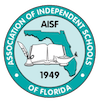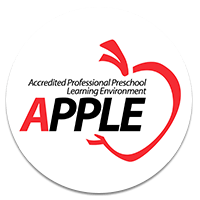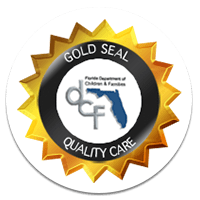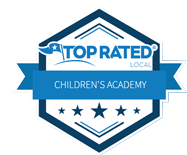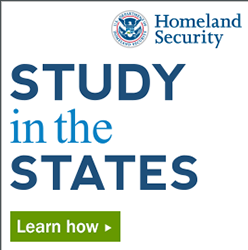The 4-Year-Old Standardized Curriculum Plan, Goals and Objectives
Understanding and Using This Document
This document lists a sampling of essential skills and concepts which students will be expected to master this year in language arts, mathematics, science, and social studies. The rate at which these skills are mastered will vary from student to student depending on individual development and learning styles. Although skills and concepts are listed in separate subject areas, they are not taught in isolation. They are integrated throughout the curriculum using a wide variety of methods and technologies. Many concepts and skills are reinforced and expanded from one grade level to the next.
A Standards-Based Curriculum
Sunshine State Academy is dedicated to the implementation of a standards-based curriculum, requiring all the students to master standards composed concepts and skills which are critical to their school success: preparing them for graduation, post-secondary education, and employment.
The prekindergarten standards are based on the Head Start Child Development and Early Learning Framework and the Florida Early Learning and Developmental Standards for Four-Year-Olds.
This packet has been developed by the Early Childhood Education Department. Detailed information by grade level is available for review at each elementary school.
How Parents Can Help
- Encourage reading by having newspapers, magazines, and books around your house
- Read aloud to your children to build their vocabulary and listening skills
- Share and discuss books and stories at home to motivate your children to read
Websites that provide reading lists and guidelines for parents
- National Institute for Early Education Research www.nieer.org
- National Association for the Education of Young Children www.naeyc.org
- Colorado- A bilingual site for families www.colorincolorado.org
- Reading Rockets www.Readingrockets.org/audience/parents
LANGUAGE ARTS
The prekindergarten (age 4) student
Emergent literacy
- Enjoys reading and uses books and other reading materials appropriately
- Recognizes that spoken sounds are connected to letters in words, written or read, and that words are made up of sounds
- Demonstrates age-appropriate phonological awareness of:
- Combination and deletion of compound words (e.g., base + ball= baseball; railroad – rail= road)
- Combination of syllables to make words (e.g., bro + ther= brother)
- Deletion of a sound from a word (e.g., pin-/p/= in)
- Rhyme and combination of sounds in one-syllable word (e.g., when teacher says /b/ + /at/, child selects the picture of a bat)
- Words with the same beginning and ending sound (e.g., bike, book; bat, cat)
- Recognizes and names most letters of the alphabet
- Recognizes and names some letter sounds
- Retells, asks, and answers questions about a story after it is read aloud
Language
- Listens attentively to age-appropriate stories read aloud
- Listens and responds to familiar songs
- Follows two and three step oral directions
- Uses age-appropriate grammar in conversations
- Speaks clearly and is understood by most listeners
- Expresses ideas and feelings through sentences
- Describes a recent event and can answer simple questions about it
- Initiates a conversation with a familiar adult
- Tells a story using words, props, and gestures to convey meaning
- Describes objects, actions, and events through expanded vocabulary
- Understands and uses age-appropriate vocabulary words
- Uses category labels (e.g., fruit, vegetable, transportation, tool)
- Uses complete sentences consisting of four or more words
- Understands and follows verbal and non-verbal conversation rules
- Understands and uses language appropriate for different contexts and purposes
- Describes an event or object using words to provide ideas, show feelings, or actions
- Repeats familiar songs, poems, fingerplays, and predictable patterned stories containing rhyme, rhythm, and repetition
- Engages in conversations with peers
Reading
- Demonstrates understanding of books read aloud
- Retells a story after it is read aloud
- Enjoys reading and related activities
- Answers questions about the pictures in a story
- Makes meaningful predictions about text using picture clues
- Identifies own name, labels, and signs in his/her classroom
- Identifies words that name persons, places, or things and words that name actions
- Names and sorts common items (e.g., colors, shapes, and foods)
- Understands that print contains a message
- Asks and answers questions about material that has been read or heard
- Points to words as they are being spoken
- Predicts what might happen next in a story
- Retells familiar stories and rhymes through conversation, writing, or drama
- Makes connections between characters, events to real-life people, or events through questioning and discussion
- Recognizes how books are read (front-to-back) and basic characteristics such as title, author, and illustrator
- Understands print conventions such as moving from left to right and top to bottom when reading
- Demonstrates interest in different kinds of literature, such as fiction, non-fiction, and poetry
Writing
- Intentionally uses pencils, crayons, markers, chalk, and/or a keyboard to represent thoughts
- Draws a picture relating to a class experience and dictates text to teacher
- Writes some letters on request
- Uses letter-like shapes, symbols, and letters to convey meaning
- Demonstrates age-appropriate ability to write letters
- Shows knowledge of structure of written composition
- Scribbles on paper and may describe what he/she has “written”
- Scribbles on paper for real purposes (e.g., making a sign, a shopping list, a thank you note, etc)
- Writes own name not necessarily with correct spelling or well-formed letters
- Recognizes that writing is a way to communicate for a variety of purposes, such as giving information, sharing stories, or giving an opinion
MATHEMATICS
The prekindergarten (age 4) student
Number sense, concepts, and operations
- Recognizes numbers and quantities in the everyday environment
- Understands that numbers come “before” and “after” one another
- Understands and uses one-to-one correspondence when counting
- Counts and constructs sets of 10-15 objects
- Uses the number name of the last object counted to represent the number of objects in a set
- Compares two sets to determine if sets are equal, if one set has more or less
- Understands that numbers can be represented by words and begins to understand the relative size of those numbers
- Understands the pattern of counting by adding one, up to number 31, with teacher support
- Begins to separate sets into a maximum of four parts, with teacher support
- Understands and names ordinal positions (e.g., first, second, third, fourth, fifth)
- Shows understanding of addition and subtraction by combining and removing objects from a set
- Identifies the new number created when numbers are combined or separated
Measurements
- Weighs objects, explores concepts or heavier and lighter
- Describes concepts or time and temperature (e.g., before, after, day, night, hot, and cold)
- Sorts, measures, and orders objects by length or size
- Measures and compares objects by length, height, and weight
- Uses measurement vocabulary (e.g., more, less, shorter, longer, heaviest, and lightest)
- Represents and analyzes data using charts and graphs with teacher support
- Uses standard and non-standard tools to measure and compare
Geometry and spatial sense
- Identifies, describes, and sorts two dimensional shapes (e.g., circles, squares, rectangles, triangles, ovals, and other shapes)
- Identifies, describes, and sorts three dimensional shapes (e.g., sphere, cube, cone, cylinder, and pyramid)
- Understands and uses language to describe spatial relationships (e.g., in, out, above, below, over, under, next to, beside, on top of, inside, and outside)
- Follows directions to move or place one object in relation to another (e.g., beside, in front of, and below)
- Understands orientation words such as diagonal, horizontal, and vertical
- Predicts and analyzes results of data collection with teacher support
- Recognizes shapes in real world objects
- Uses materials that fit together and come apart in algebraic thinking
- Sorts objects or pictures of objects and classifies them on the basis of one characteristic (color, shape, size)
- Compares the size and shape of objects
- Identifies and recognizes simple patterns of sounds, physical movements and/or concrete objects
- Repeats simple patterns of sound, physical movement, and/or concrete objects
- Uses concrete objects to create and extend a pattern
- Begins to use simple strategies to solve mathematical problems in data analysis and probability
- Collects and analyses information
Technology
- Is aware of technology and how it affects life
SOCIAL STUDIES
The prekindergarten (age 4) student
History
- Says his/her first and last name
- Identifies the relationships between members of a family (e.g., mother, father, sister, and brother)
- Begins to understand family needs and roles
- Begins to understand some people’s jobs and the work associated with them
- Interacts easily with familiar adults
- Demonstrates understanding of rules
- Demonstrates awareness of people, places they live, and how they change over time
- Demonstrates awareness of the environment
- Differentiates between past, present, and future
- Recognizes events that happened in the past
Geography
- Plays, learns, and is aware of different areas of the school and classroom (e.g., playground, centers, office)
- Identifies outdoor places and indoor places through photographs, drawings, and pictures
Civics and government
- Participates in classroom event
- Follows classroom materials and cooperates during learning and playing activities
- Seeks adult assistance appropriately
- Interacts easily with one or more children
- Shows empathy in caring for others
- Shows awareness of what it means to be a leader
- Understands similarities and respects differences among people
SCIENCE
The prekindergarten (age 4) student
The nature of matter
- Sorts, describes, and compares objects in nature (rocks, leaves, nuts)
- Compares objects in nature by color, size, texture, and other physical properties
Energy
- Knows that the sun supplies light and heat
Force and motion
- Understands that different things move at different speeds
- Knows that one way to change how something is moving is to give it a push or pull
Processes that shape the earth
- Recognizes patterns in weather
Earth and space
- Observes and describes the nighttime sky including the moon and the stars
Processes of life
- Observes, describes, and compares living things in a pond environment, in a forest, and on a farm
- Asks questions and uses sense to observe and explore materials and natural phenomena
- Uses simple tools and equipment for investigation
How living things interact with the environment
- Takes a walk inside and outside his/her home and describes and compares things that are living and non-living
- Recognizes that people share the environment with other people, animals and plants
- Understands that people can take care of the environment through activities, such as recycling
The nature of science:
- Uses sense and tools, including technology to gather information, investigate materials, and observe processes and relationships
- Collects, describes, records information through discussions, drawings, maps, and charts
- Observes and makes comparisons over a short period of time
- Guesses and makes predictions about events that will occur next and evaluates them
- Participates in simple investigations to form hypotheses, gather information and make generalizations
Physical health:
- Shows characteristics of good health to facilitate learning
- Performs oral hygiene routines
Knowledge of wellness:
- Shows that basic physical needs are met
- Makes choices
- Performs self-care tasks independently
- Communicates understanding of the importance of health and safety rules and routines
- Distinguishes from most healthy to least healthy foods


